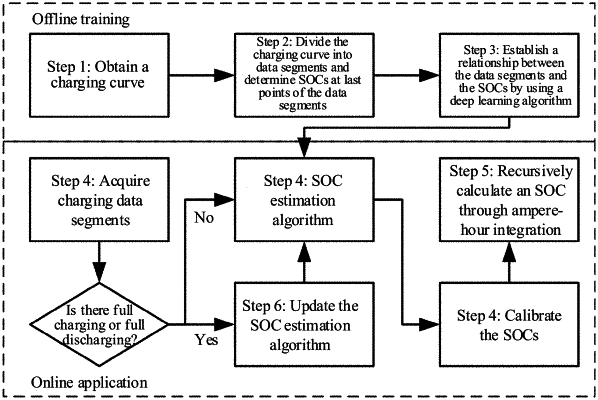| CPC G01R 31/367 (2019.01) [G01R 31/378 (2019.01)] | 5 Claims |

|
1. A method for estimating a state of charge (SOC) of a lithium-ion battery system based on artificial intelligence (AI) comprising the following steps:
step 1: obtaining a daily charging curve of a battery system as training data;
step 2: dividing the daily charging curve into data segments and calibrating SOCs at last points of the data segments comprises: determining a preset segment length and sliding the preset segment length on the daily charging curve to divide the daily charging curve obtained in step 1 into a plurality of data segments with the preset segment length, wherein the data segments each comprise a sampled signal sequence from a corresponding portion of the daily charging curve; and determining the SOCs at the last points of the data segments;
step 3: selecting a deep learning algorithm, training the deep learning algorithm by using the data segments obtained in step 2, and establishing a mapping relationship between the data segments and the SOCs at the last points of the data segments with the data segments obtained in step 2 as input of the deep learning algorithm and the SOCs at the last points of the data segments as output of the deep learning algorithm;
step 4: practically applying a trained deep learning algorithm obtained in step 3, inputting a charging data segment acquired by a battery management system into the deep learning algorithm, and outputting an estimated battery SOC; and
step 5: recursively calculating the SOC by using an ampere-hour integration algorithm between every two charging processes.
|